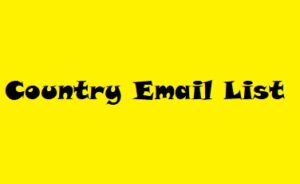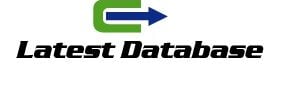In the world of digital marketing, terms like “mailing list” and “email marketing” are often used interchangeably, leading to confusion among many marketers and businesses. However, it is crucial to recognize that these terms represent distinct concepts that play essential roles in building and maintaining successful email campaigns. In this article, we will explore the difference between a mailing
What is a Mailing List
A mailing list refers to a compilation of email Finland Email List addresses and contact information gathered from individuals who have voluntarily opted in to receive communications from your brand. These individuals might have signed up through your website, subscribed to your newsletter, or expressed interest in your products or services through various lead generation efforts.
Mailing lists can be segmented based on specific criteria like demographics, interests, or purchase behavior. By organizing the list into targeted segments, businesses can tailor their email content to suit the preferences of each group, increasing the chances of engagement and conversion.
Mailing lists act as the foundation of any successful email marketing campaign. They provide businesses with a direct and personalized channel of communication to reach their audience, fostering brand loyalty and trust among subscribers.
Email marketing, on the other hand, is the strategic use of email as a marketing tool to promote products, services, or content to the individuals on your mailing list. While the mailing list serves as the recipient database, email marketing involves crafting and sending compelling messages that resonate with your target audience.
The true essence of email marketing lies in creating engaging and valuable content that resonates with subscribers, encouraging them to take desired actions. This can include promoting new products, offering exclusive discounts, sharing relevant blog posts, or providing valuable resources to the audience.
An effective email marketing campaign requires careful planning, creativity, and adherence to best practices. Delivering timely and valuable content not only keeps your audience interested but also helps nurture leads and drive conversions.
Integrating the Power of Mailing Lists into Your Email Marketing Strategy
Now that we have a clear understanding of the B2B Lead distinction between mailing lists and email marketing. It’s essential to recognize how they complement each other to enhance your overall marketing efforts.
- Building a Quality Mailing List: To run a successful email marketing campaign, start by building a high-quality mailing list. Focus on organic methods to gather subscribers who are genuinely interested in your offerings. Implement lead magnets, opt-in forms, and other incentives to encourage visitors to subscribe willingly.
- Segmentation for Personalization: Utilize the po
- wer of segmentation to personalize your email content and ensure it resonates with specific audience segments. This personal touch will significantly improve engagement and click-through rates.
- Crafting Compelling Email Content: Once you have your mailing. List and segmented groups, create captivating and valuable content for your email campaigns. Use persuasive copywriting, eye-catching visuals, and relevant offers to encourage action from your subscribers.
- Automation and Drip Campaigns: Implement email automation to send timely and relevant messages to your subscribers. Drip campaigns can be particularly effective for nurturing leads through a. Series of automated emails based on specific triggers or time intervals.
- Monitoring and Optimization: Regularly monitor the performance of your email marketing efforts. Pay attention to open rates, click-through rates, and conversion metrics. Use this data to optimize your campaigns for better results.







